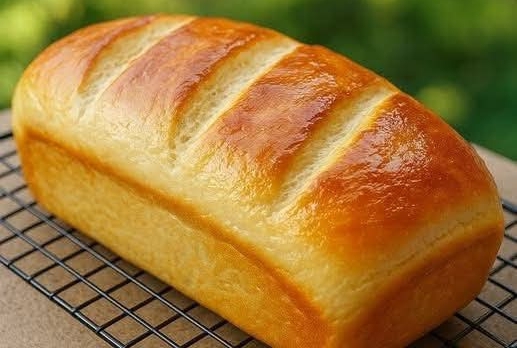
Ingredients
Dry Yeast: 10 grams (1 packet)
Warm Water: 200 ml (1 glass)
Flour: 720 grams (6 cups) + 120 grams (1 cup) for initial mixing
Salt: 10 grams (1 teaspoon)
Egg Yolk: 1
Milk: 1 tablespoon
Preparation
Dissolve the dry yeast in warm water and stir until dissolved.
Mix in 120 grams of flour until smooth. Gather the dough, cover, and let it rest for 15 minutes.
Add 400 ml of warm water, mix well, then gradually add 720 grams of flour and salt. Knead for 3-4 minutes until a soft, slightly non-sticky dough forms.
Cover the dough and let it ferment until it doubles in size. Remove air, gather, and divide into two parts. Roll each into a ball and let rest for 10 minutes.
Flour the surface lightly, expand the dough with your fingers, then roll it inward. Repeat with the second dough.
Arrange the dough on a baking tray, cover, and leave for 20 minutes. Brush with a mixture of egg yolk and milk, then bake at 200°C (392°F) until golden brown, about 25-30 minutes.
Serving Suggestions
Serve warm with butter or your favorite spread.
Great alongside soups, salads, or as a sandwich base.
Cooking Tips
Ensure the water is warm, not hot, to activate the yeast properly.
Avoid over-kneading the dough to keep it soft and light.
If the dough is too sticky, add a little more flour as needed.
Nutritional Benefits
Provides a good source of carbohydrates for energy.
Homemade bread can be lower in preservatives compared to store-bought options.
Dietary Information
This bread recipe contains gluten due to the flour.
Suitable for vegetarians.
Nutritional Facts (per serving)
Calories: 150
Total Fat: 1.5g
Saturated Fat: 0.5g
Cholesterol: 20mg
Sodium: 300mg
Total Carbohydrates: 30g
Dietary Fiber: 1g
Sugars: 1g
Protein: 4g
Storage
Store in an at room temperature for up to 3 days.
For longer storage, freeze in a resealable bag for up to 3 months. Thaw at room temperature or warm in the oven before serving.
Enjoy!